The Slipway
During the end of July and the start of August, we took the ship over to the slipway. We’re required to have an out-of-water survey every two years, and in any case the ship should look her best for the tall ship events in September.
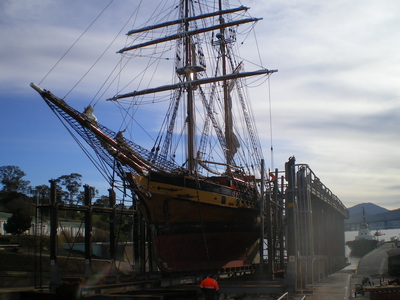
We all were issued with high-vis jackets and steel-capped volleys to wear on site. Everyone promptly personalised their jackets:
![[:>] Jacket](../../../../../../blog/images/slipway/jacket.jpg)
Then we brought the coffee machine into the deckhouse while we waited for the scaffolders to make our access tower. It saw a lot of use during the project - lots of early mornings and late nights. That access tower felt a little longer each time you climbed it.
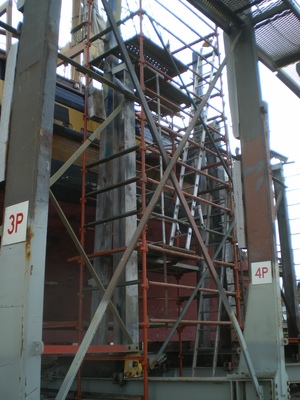
Scaffolding is awesome. I’d never looked at it closely before, but it’s a really modular system. Each piece has wedges built into it, that are hammered down to fix them together. No nuts and bolts or anything fiddly like that. A scaffolding crew of 3-5 people put the tower up in a couple of hours and did rest of the scaffolding in a day.
Safety gear is weird. There’s a paradox that comes with high-vis gear: you become visible on a worksite and invisible to the public at large. I have never been more conspicuously looked-away-from than when I was wearing that jacket. Hard hats are funny, too. We had to wear them whenever we were working underneath the hull. So you put the helmet on and because you’re not used to having a bigger head, you hit it on everything where you’d normally have no trouble.
Once we could get down, we worked. The strainers, where seawater enters pumping system through the hull, were pulled apart and the sea boogers removed:

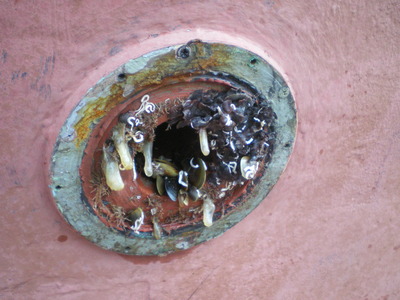
Behind two of those strainers was the sea suction manifold, which is where the seawater is distributed to the fire pump, cooling systems, deck wash and so on. You obviously can’t pull it apart when you’re in the water so we took that to pieces, cleaned the pipe out with a water-blaster, repainted everything, and made it look spiffy:
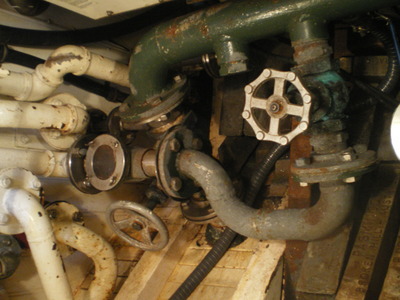

The rudder had to come out and its paint stripped with a pneumatic needle-gun, before being repainted and reinstalled. While it was gone, the propeller shaft was disconnected and extracted, to check for wear on the bearings.
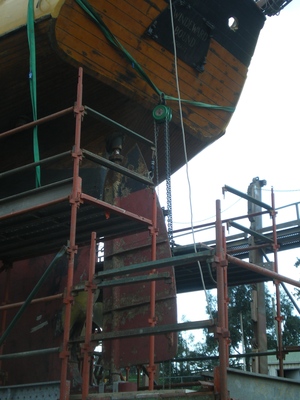
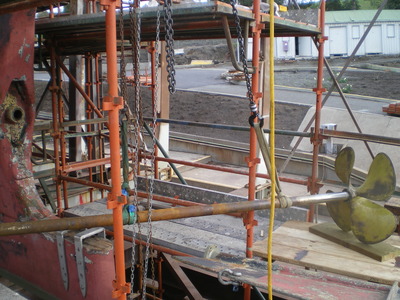
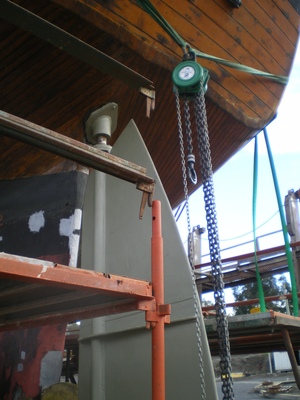
Once all that was back together, we had to repaint the hull above and below the waterline. Below the waterline is a copper-rich antifoul that slows marine growth on the hull.

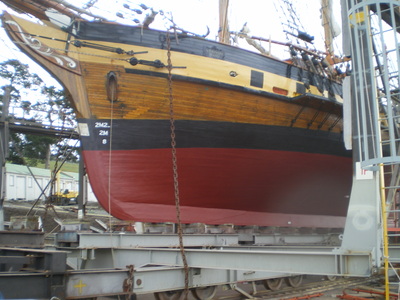
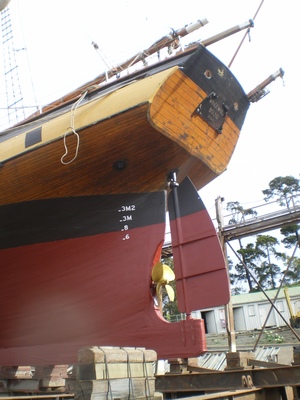
And finally we were ready to get back in the water. The scaffolding came down faster than it went up, as the scaffolding crew just knocks the wedges out and throws the pieces on the concrete. It made a tremendous amount of noise but it’s the quickest way to do it.

Then we were free to be wound back in. The winch was started and our cradle slowly slid down the railway. It’s a funny feeling: when you first get wound out of the water, you start to feel really tall as the water gets taken away. Then when you go back you feel like you’re sinking slowly.

Once the ship was halfway in the water, we carefully opened the seawater valves and bled the air out of the pipework, checking for leaks as we went. Once we had water everywhere, we were able to bring the ship’s generator and engine online and motor back to our home berth for some much needed rest.